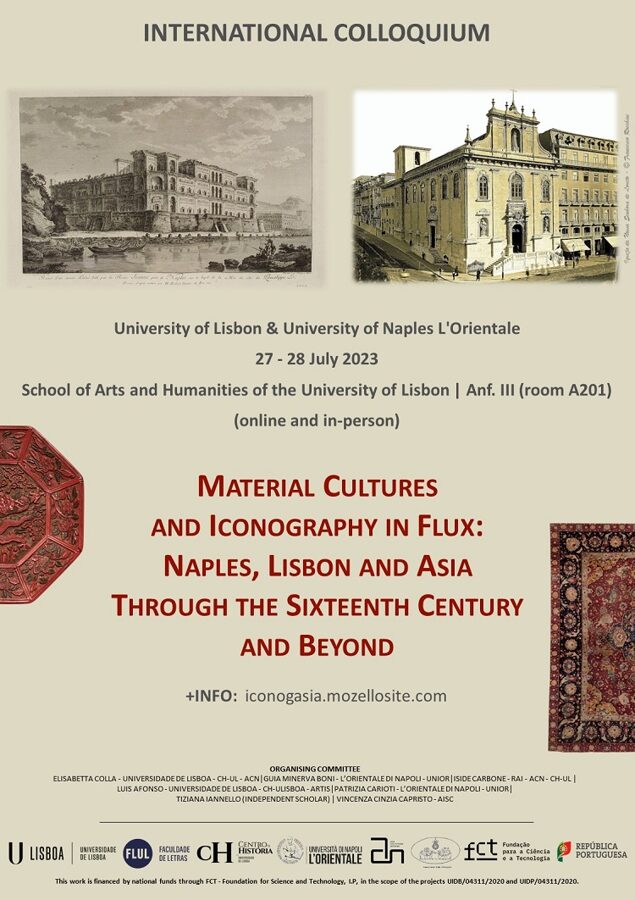Presentation
DOWNLOAD PROGRAMME (PDF)
DOWNLOAD BOOK OF ABSTRACTS (PDF)

The Portuguese Seaborne Empire (cf. Charles Boxer) and the enhancement of sea routes between Portugal and Asia made possible the flux of Asian (im)materiality to Europe promoted the introduction of Western ideas, customs, iconography and artefacts in Asia and vice-versa. Renaissance Europe gradually opened its doors to new challenges and knowledge from Asia increasingly spread westward. This was just the beginning of a constant flow of exchanges that started in the sixteenth century and is still ongoing.
Lisbon and Naples have played a pivotal role in the circulation of Asian spices, precious objects, porcelain, silk and even flora and fauna, which filled the rooms in the palaces of European royalty and wealthy families alike.
The maritime trade of diverse kinds of goods was part of a larger web of East-West connections that went far beyond mere commercial purposes. During the long period commonly known as the time of “discoveries”, the curiosity of European humanists, scientists, artists as well as ordinary people was stimulated by “exotic” objects and ideas.
The flow of (im)materiality encompassed advancements not only in the applied sciences, but also in the practical application of knowledge across the spectrum of human experience. The encounter of different cultural elements was witnessed in many disciplines, from science to humanism, from botanics to literature, from medicine to performing arts.
An example of this phenomenon of cultures in motion, is the establishment of the Chinese College in Naples (1730s). The arrival of young Chinese neophytes in Naples was part of a wider process that involved many different actors and objects of various types. Some pieces manufactured in the Royal Porcelain Factory in Naples during the eighteenth century, for instance, are good examples of the migration, perception, interpretation and adaptation of techniques, materials, models and patterns from East to West.
With the opening of transoceanic routes eastward, Lisbon contributed to make Asia closer for Europeans and facilitated the development of new perceptions of Asia. The Tower of Belem and the Jerónimos Monastery are still there to remind us of an age of explorations and discovery of the (im)materiality of other cultures, meant as semiotic representations and catalyst ideas in the East-West relations.
The goal of this conference is to examine how the flow of material cultures, iconography and symbols is reflected in the collections of Asian objects in Europe, with a particular focus on Naples and Lisbon. Thus, we welcome submissions from interdisciplinary fields that propose novel approaches to new and old theoretical challenges.
The conference will give researchers an opportunity to present their studies to an audience of peers, in a friendly and stimulating atmosphere, as well as to network with fellow academics in the field of (im)material culture in flux in and outside Asia.
To register please send an email to asiacollectionsnetwork@gmail.com stating your name, academic degree and/or position and affiliation, and specifying whether you are planning to attend online or in person.
